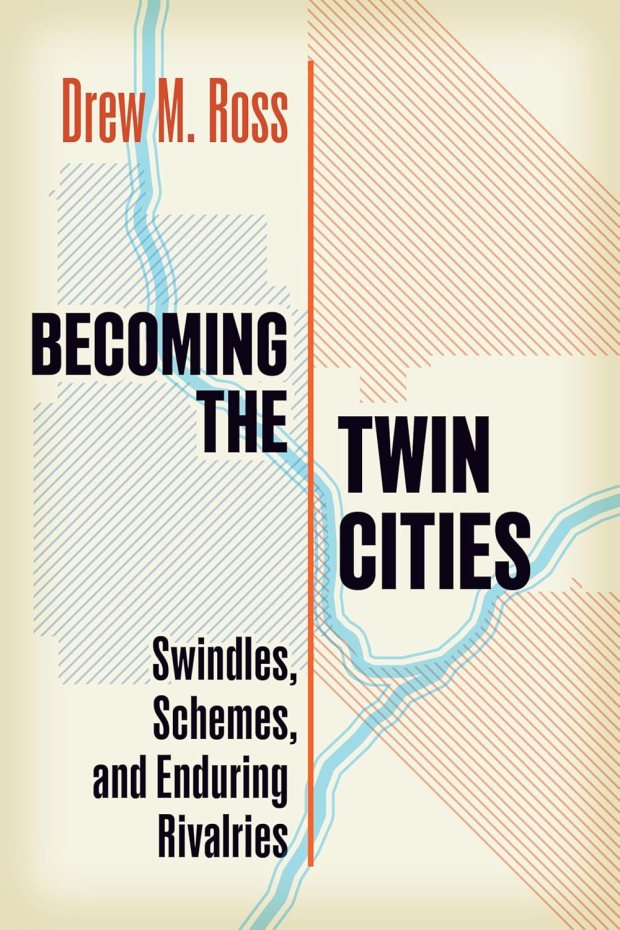How did we begin? No, this isn’t about the birds and bees. It’s about Drew Ross’ “Becoming the Twin Cities” (Minnesota Historical Society Press, $27.95), the story of how and why St. Paul and Minneapolis evolved separately but have come together in a metropolitan area with the two cities so close together that visitors don’t even know which one they are in unless they pay attention to road signs
 Subtitled “Swindles, Schemes, and Enduring Rivalries,” Ross’ book explores how many people have tried — and failed — to unite Minneapolis and St. Paul into one city. Their motivations include visionary ideals, commercial gain or political ambition. He uncovers the 19th-century history of scheming, social rivalries and grudges, as well as utopian idealism and personal ambition that explain how the Twin Cities have the different governments and distinct personalities we know today.
Subtitled “Swindles, Schemes, and Enduring Rivalries,” Ross’ book explores how many people have tried — and failed — to unite Minneapolis and St. Paul into one city. Their motivations include visionary ideals, commercial gain or political ambition. He uncovers the 19th-century history of scheming, social rivalries and grudges, as well as utopian idealism and personal ambition that explain how the Twin Cities have the different governments and distinct personalities we know today.
It won’t come as a surprise that the configuration of the Mississippi River had a lot to do with early settlements. Beginning with the story of Fort Snelling’s founding and Joseph Plympton’s expansion of a reserve around it, Ross follows up with the land-grabbing and moneymaking schemes of Henry Rice and Franklin Steele, explores the rivalries between local Republicans and Democrats (and their partisan newspapers) and details the battles over the locations and significance of the Capitol, the State Fair and the Midway neighborhood. Among other characters are Lt. Zebulon Pike, tavern keeper Stephen Desnoyer, architect Horace W.S. Cleveland, religious leader (and land speculator) Archbishop Ireland, and publisher Bill King as well as St. Paul’s favorite early settler Pierre “Pig’s Eye” Parrant.
Ross, who lives in St. Paul, takes dryness out of history and makes it come alive with his easy style. He is a a writer, editor and researcher who won the Minnesota Historical Society’s 2024 Solon J. Buck Award for historical writing.
Ross will discuss his book at 2 p.m. Saturday at Minnesota History Center, 345 W. Kellogg Blvd., St. Paul. The program is free and open to the public.








